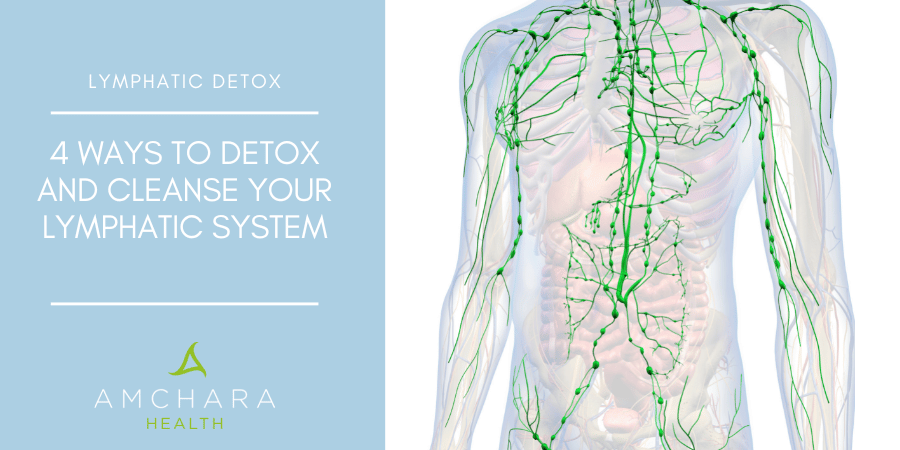We’ve all heard of detoxing, but did you know it can help with weight loss?
This article will look at what’s involved in a detox, why they are so effective and, if you’ve only a week to spare, how a 7-day detox can be incorporated into your lifestyle.
What is a detox?
The term ‘detox’ refers to the process of ridding the body of toxins and waste products.
Our bodies are constantly detoxifying thousands of substances every second.
If we did not do this, these toxins would eventually damage the DNA in our cells.
What is a toxin?
The word ‘toxin’ is bandied around a lot these days.
Put simply, a toxin is defined as any substance which adversely affects our cells – something that acts as a poison.
Where do toxins come from?
We cannot help being exposed to toxins from the food we eat, the water we drink and the air we breathe.
We can never avoid them altogether. An estimated 140,000 chemicals have been introduced into the environment since 1950.
Crops are grown using fertilisers and pesticides – in a recent study, 99% of people in the USA had traces of DDT in their blood, despite it being banned since 1972.
Non-organic meat contains hormones and antibiotics, and fish can be loaded with metals like mercury.
Our skin absorbs all manner of chemicals from cleaning products or cosmetics.
We even make toxins – waste products from our metabolic functions – in our own bodies which need to be got rid of, a bit like garbage in our own homes.
Our detox organs
Our bodies have evolved very clever methods of eliminating these toxins.
Our main organ of detoxification is our liver.
It’s a truly amazing organ, capable of performing a multitude of tasks all at the same time.
Our liver assists with fat digestion, stores nutrients and energy, and plays a role in blood clotting, to name a few of its functions.
Although it gets shouldered with an enormous burden, fortunately, our liver can recover even after years of abuse.
Our liver is ably assisted by the large intestine, also called the colon, which pushes out toxins through our faeces.
The liver can also transform some toxins into a water-soluble state and eliminate them through our kidneys.
The skin and breath are also used to expel toxins, although to a lesser extent.
Toxin overload
Even though our organs of detoxification are incredibly efficient systems, it’s not hard to see how they can become overloaded.
They are expected to cope with an ever-increasing tide of toxins every single day.
Over time, they begin to lose the race and toxins can accumulate in the body and begin to cause health problems.
Often they’re non-specific symptoms which appear gradually over time, such as a weakened immune system, hormone imbalance, chronic pain, lack of energy, foggy thinking and difficulty in concentrating; sinus congestion and so on.
We’re all different as to how our bodies cope with this toxic tide.
This is because we’ll have all been exposed to different levels of toxicity in our lifetimes, and we’ve inherited differing tendencies from our ancestors.
It makes sense to have a good old spring clean every now and then. So if you’ve had a few too many late nights or takeaways, read on.
Aims of a detox cleanse
The main aim of any detox cleanse is to provide the body with a clean diet to reduce the burden on our organs of detoxification.
So that means emphasising foods that aren’t overloaded with toxins.
These types of foods also provide the concentrated nutrients that the body needs for its detox mechanisms to work at their best.
Our amazing liver
The liver detoxifies many substances in a neat two-stage process.
First, the toxin molecule is transformed into a so-called intermediate substance.
After this, it’s changed again, by adding specific chemicals, into something safe enough to be escorted out of our body in the faeces or urine.
The liver needs different nutrients for each stage.
The second phase of detoxification is assisted by plant chemicals found in the cruciferous family of vegetables, which includes broccoli, brussel sprouts, cauliflower, and kale, as well as curcumin, which is found in turmeric.
The key is to keep both phases of detox at around the same rate.
This is because the intermediate chemical can actually be more volatile and harmful than the original toxin.
So if Phase 1 is bombing along too quickly, and Phase 2 is lagging behind, these intermediate molecules can build up and harm our tissues.
This partly explains why, when most of us try a detox, we can feel groggy and generally unwell during the first few days.
Fabulous fibre
Once toxins have been shunted to the waste-disposal system of the large intestine, fibre – and plenty of water – is needed to encourage them to move along.
If they aren’t carried along the colon quickly enough, there’s a risk of them being reabsorbed back into the bloodstream.
This is termed auto-intoxication and makes extra work for the liver.
The lining of our digestive system is often more permeable than it should be, which makes this re-absorption more likely. It’s a bit like dumping the contents of your rubbish bin back onto the kitchen floor right after you’ve had a spring clean!
Our modern diets are often low in fibre, which is removed from processed foods and most bread, cakes, and biscuits.
Benefits of a detox cleanse
A detox can leave you with glowing skin, bright eyes, increased energy levels and better digestion.
It will also have the happy side effect that you will lose weight because you will be eating less calorie-dense foods, your digestion will improve, and you’ll feel less bloated.
Many people find it difficult to stick to the long-term diet and lifestyle changes.
A detox cleanse can by making you feel energetic and super-healthy, help you break negative eating habits, and provide motivation to kick-start healthy dietary choices in the future.
How to choose a cleanse
There are many 7-day detox diets to choose from, from gentle diets that are fairly easy to do at home, to more cleansing juice-only fasts.
However, they all have the same aim. It’s advisable to choose a detox diet that will best fit into your lifestyle, making it more likely you will stick to it.
Don’t attempt a detox during a period of physical or emotional stress, like moving house or starting a new job.
Principals of detox cleanse
As we’ve said, the aim is to avoid the nasties whilst ramping up the goodies. It’s that simple.
Eat lots of the following:
- Unlimited organic fresh fruit and vegetables, especially raw or lightly cooked cruciferous vegetables like broccoli, kale and cauliflower. Steaming is a great way to cook them or make them into a soup.
- Vegetable juices and some fruit juice. Fruit juice does contain a lot of sugar, so it’s best not to go overboard.
- Beans and lentils; a great source of protein.
- Plenty of organic turmerics, which can help the liver with its detox role.
- Plenty of garlic which contains compounds to support the liver.
- Fresh fish, particularly wild-caught oily fish like salmon and sardines, which tend to be lower in pollutants and heavy metals.
- Unsalted fresh nuts and seeds, including almonds, Brazil nuts, walnuts, pumpkin seeds, chia seeds and flax seeds.
- Plenty of still water and herbal teas.
Avoid the following:
- Red meat
- Dairy products (milk, cream, butter, cheese and yoghurt)
- Sugar and processed carbohydrates which include bread, biscuits and cakes
- Gluten-containing grains (wheat, rye, barley and most oats)
- Processed foods, ready meals, takeaways
- Alcohol
- Coffee and tea
- Fizzy drinks
Strategies to help your detox
Minimise social engagements during your 7-day detox, so you won’t be tempted!
Drink plenty of liquid to encourage toxin elimination via the bowel and the urine.
Start your day off with a boost to your detox systems with warm water and lemon, or dandelion tea.
Make time for yourself – yoga, meditation and deep breathing exercises are all excellent ways to de-stress.
Exercise is also great at helping you to detox.
Dry skin body brushing can help the skin throw off toxins. Use a body brush with natural fibre bristles.
Use gentle circular movements, always brushing towards your heart, starting with the feet. Get into the habit of doing this for a few minutes before your shower or bath.
If you want to ramp up your 7 day detox, herbal supplements such as Milk Thistle can support the liver, whilst fibre supplements like psyllium husks or ground flax seeds can help to keep the bowels moving.
Downsides to a 7 day cleanse
At the outset you may feel headachy, nauseous, tired and even have aching joints, but if you persist these symptoms should abate after a few days.
Symptoms like these are really common as your body gears itself up to get rid of those toxins.
You’ll probably find yourself craving foods, particularly sugary foods, as your blood sugar balance starts to right itself.
Your skin may become dry, you may break out in spots, or could have mood swings.
You will probably sweat and urinate more, and your bowel movements will increase.
Keeping Phase 1 and Phase 2 detox in balance and encouraging toxin elimination by dry skin brushing and regular bowel movements can help to minimise these side-effects.
If you want to try a more restricted detox, there are broth fasts, juice fasts or water only fasts to choose from.
However, it’s not a great idea to jump into these fasts without having tried a gentler detox first.
These types of detox can be extremely effective when done in conjunction with an experienced therapist.
We hope after reading this article you’ll be inspired to try your own 7-day detox.
Your body will thank you for it!
You may be interested in more detox stories:






